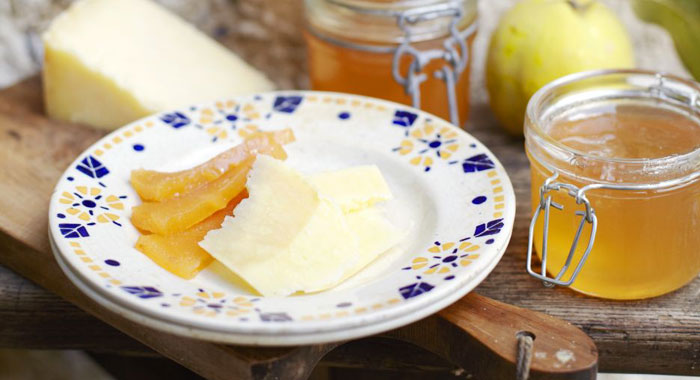
Pronounce it: kwin-s
The two different shapes – apple and pear in which quinces grow are an obvious clue to the fruits to which they are related. When ripe, they are very fragrant, with a smooth, golden yellow skin, but their hard, bitter flesh means that they are used almost exclusively for cooking, rather than eating raw. Once cooked, the flesh develops a deeper flavour and turns a golden pink.
They contain a high level of pectin, which makes them great for making jellies, jams and other preserves, such as the Spanish quince paste, membrillo, which is often served with cheese. They are also good in chutneys, pies and tarts.
Availability
British quinces are in season from October through to December, and you could easily grow your own tree at home.
Choose the best
Firm, unblemished fruit. Avoid quinces with downy skin – it’s a sign they’re unripe.
Prepare it
Wash, then core by cutting them into quarters and cutting the core away. Slice or cut into chunks as required.
Store it
Quinces keep well at room temperature – they’ll last around a month or so.
Cook it
Bake (50 minutes); poach (10-15 minutes).
Alternatives
Try pear.
Be the first to comment on "Quince"